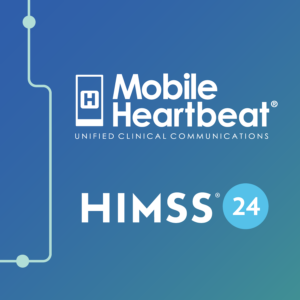Cloud technology has been widely integrated for many years now—even healthcare organizations have begun to leverage cloud technology for data storage at significant levels. As this technology becomes more secure and widespread throughout the healthcare industry, organizations may increasingly turn to cloud-hosted applications over on-premises counterparts.
While there are benefits to both hosting options, cloud-based applications offer a smaller footprint, quicker deployment times and a less expensive investment to implement, all of which are attractive benefits for an enterprise that is looking to provide cutting-edge clinical technology without overwhelming a strained budget.
For healthcare organizations that already leverage cloud technology for mission-critical systems—HIMSS Analytics puts this number at about 68 percent in 2019—cloud-based applications are clearly becoming an important investment for healthcare organization.
Primarily, hospitals are leveraging this technology for data storage, or cloud-hosted apps like for the EHR. However, in the near future we see cloud technology becoming much more ubiquitous across the health enterprise.
Deploying Cloud-Hosted Communication
Cloud-hosted communication and collaboration solutions create a unique opportunity for healthcare organizations to align employees across all departments and facilities. With a leaner infrastructure, quicker time to rollout and wider accessibility, cloud-based communication and collaboration solutions will become a more attractive option for technology teams, administrators and clinicians alike.
First, the flexibility of hosting the software on a remote datacenter versus installing it within the organizational infrastructure is a significant draw. Facilities and organizations with older infrastructures sometimes run into problems installing new, on-premises technology. There can be compatibility issues, or the newer technology can overwhelm the existing infrastructure. Even for newer servers and networks, a net-new technology implementation can cause unforeseen issues unless the installation team is highly experienced.
When this technology is hosted on the cloud, however, it gets remotely installed onto devices using a web connection, so there’s no concern about overwhelming the facility’s technological infrastructure. This also means that users can begin using the new communication technology as soon as their device receives it from the cloud—they do not need to bring their device to IT to have the program installed.
This mass, remote roll-out is ideal for encouraging users to interact with the communication solution right away. Everyone can use the same platform without worrying whether the colleague they’re trying to reach has access to the platform.
Bringing Cloud Technology to the Ambulatory Arena
The ease, value and accessibility of cloud-hosted collaborative technology does not begin and end with large acute care facilities. Ambulatory and specialty care facilities, especially those operating within a larger healthcare system, see a massive benefit from deploying a cloud-hosted collaborative platform like Banyan™. For all of the same reasons the cloud infrastructure provides flexibility, satellite facilities and outpatient centers experience a similar flexibility and ease of use. Additionally, aligning ambulatory facilities to the same platform the larger acute care hospital employs provides a more cohesive and unified experience for both staff and patients.
As cloud technology continues to appeal to healthcare organizations for its agility and reduced startup investment, we expect to see this value ripple out toward smaller community facilities. For more information on how the Banyan Platform and the Microsoft Cloud for Healthcare are advancing the clinical technology experience, contact us.




